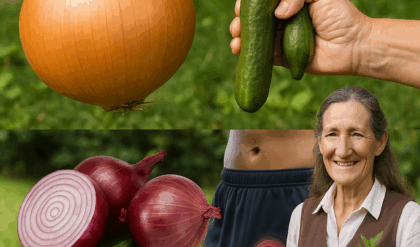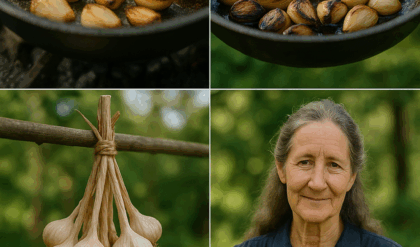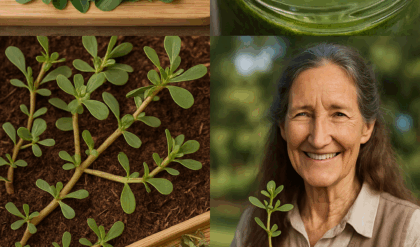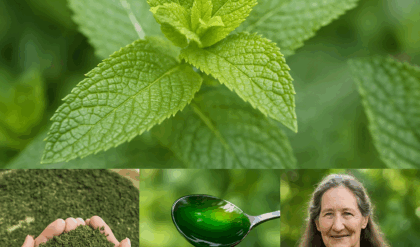What if a single plant could transform your garden into a colorful oasis, protect your vegetables from pests, and add a peppery zing to your meals? Nasturtiums, with their stunning orange, yellow, and red blooms, are more than just a pretty face—they’re a gardener’s dream, offering pest control, pollinator attraction, and edible delights. Easy to grow and packed with health benefits, these versatile plants are a must-have for any backyard. Curious about how Nasturtiums can enhance your garden and kitchen? Let’s explore their incredible benefits, culinary uses, and simple growing tips to make them a star in your outdoor space.
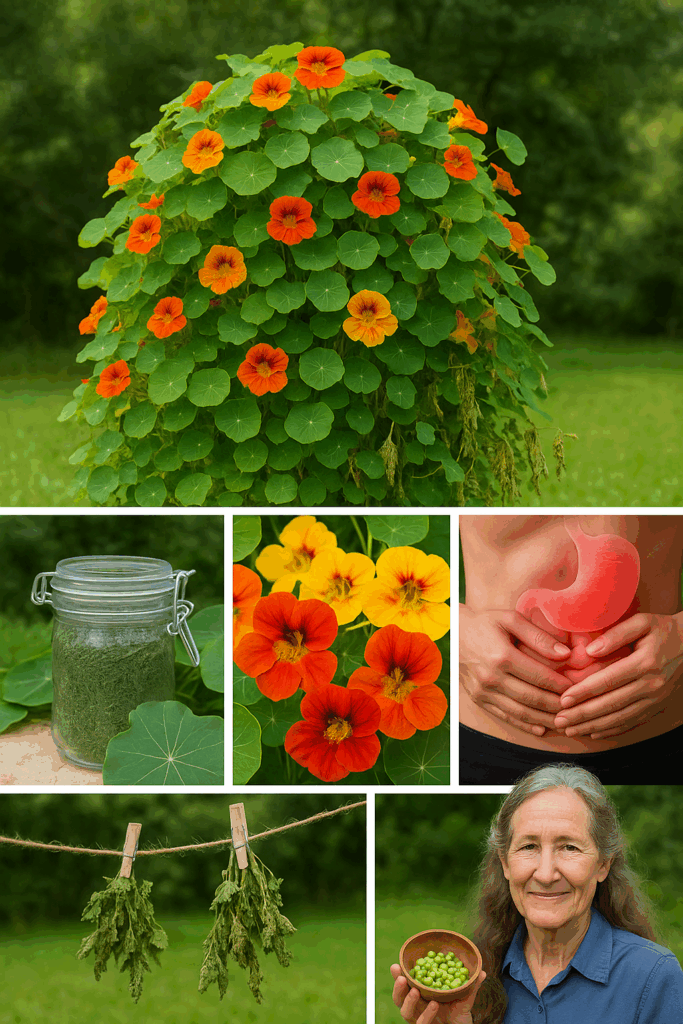
Why Nasturtiums Are a Garden Essential
Nasturtiums (Tropaeolum majus) are low-maintenance plants that thrive in diverse conditions, making them ideal for both novice and seasoned gardeners. Their vibrant flowers, lush green leaves, and practical benefits make them a triple threat in beauty, functionality, and nutrition. Here’s why they’re a must-have.
🌿 Natural Pest Control
Nasturtiums act as a “trap crop,” attracting pests like aphids, caterpillars, and whiteflies, keeping them away from delicate plants like tomatoes, cucumbers, and peppers.
🐝 Attracts Pollinators
Their bright blooms draw bees, butterflies, and beneficial insects, boosting pollination and increasing yields for crops like squash and berries.
🌱 Thrives with Ease
Nasturtiums flourish in poor soil, require minimal care, and are drought-tolerant, making them perfect for low-maintenance gardens or containers.
🌸 Edible and Flavorful
Every part—flowers, leaves, and seeds—is edible, offering a peppery, arugula-like flavor that elevates salads, dishes, and garnishes.
🥗 Nutrient-Rich Health Boost
High in vitamin C, antioxidants, and minerals like iron and calcium, Nasturtiums support immunity, fight cell damage, and promote overall wellness.
🦠 Antibacterial and Antifungal
Their natural antimicrobial properties make them a traditional remedy for minor infections and skin issues.
How to Use Every Part of Nasturtiums
Nasturtiums are a culinary delight, with each part offering a unique peppery taste. Here are three ways to incorporate them into your meals.
1. Nasturtium Flowers for Colorful Garnishes 🌸
Add a spicy, vibrant touch to your dishes.
How to Use:
🥄 Toss whole flowers into salads for a pop of color and flavor.
🌱 Garnish soups, appetizers, or main dishes with fresh blooms.
🍽️ Stuff flowers with soft cheeses like goat cheese for a stunning appetizer.
2. Nasturtium Leaves for Savory Dishes 🥗
Enhance meals with their zesty bite.
How to Use:
🥄 Add chopped leaves to salads, sandwiches, or wraps for a peppery kick.
🌱 Blend into pesto with nuts, garlic, and olive oil for a spicy twist.
🍳 Mix into omelets or frittatas for an herbaceous flavor boost.
3. Nasturtium Seeds as a Caper Substitute 🧂
Turn seeds into a tangy condiment.
How to Use:
🥄 Pickle green seeds in vinegar to make “poor man’s capers” for salads or sauces.
🌱 Add to marinades for meats or veggies for extra tang.
🧵 Grind dried seeds into a peppery spice for roasted vegetables.
Growing and Caring for Nasturtiums
Nasturtiums are beginner-friendly and thrive with minimal effort. Here’s how to grow them successfully.
🌞 Planting Tips
Plant seeds in spring after the last frost, or start indoors 2–4 weeks earlier. Use well-draining, low-nutrient soil—rich soil leads to more foliage and fewer flowers. Place in full sun for best blooms, though they tolerate partial shade.
💧 Watering Needs
Water sparingly once established, as Nasturtiums are drought-tolerant. Overwatering can cause root rot, so let the soil dry slightly between waterings.
🌱 Maintenance
Lightly prune to control growth and encourage bushier plants with more flowers. Remove spent blooms to promote continuous flowering. If aphids appear, rinse them off with a strong stream of water.
🌸 Harvesting
Pick fully open flowers early in the day, storing in the fridge for up to 2 days. Harvest young leaves for a milder flavor, keeping them fresh in the fridge for a week. Collect green seeds for pickling or dry them on the plant for use as a spice.
Creative Uses Beyond the Garden
🌟 Natural Dyes
Boil Nasturtium flowers to create a gentle dye for fabrics, adding color to clothing or linens.
💐 Floral Arrangements
Use their colorful blooms in bouquets or arrangements to brighten any space with a pop of garden charm.
🍵 Herbal Infusions
Steep flowers or leaves in vinegar or hot water for flavorful infusions to use in dressings or teas.
Tips for Maximum Benefits
✔️ Harvest Early
Pick flowers and leaves in the morning when they’re freshest for the best flavor and nutrient content.
🌱 Plant Strategically
Grow Nasturtiums near vegetables to maximize their pest-repellent and pollinator-attracting benefits.
🧊 Store Properly
Keep fresh flowers and leaves in a damp paper towel in the fridge to extend their usability.
⚡ Experiment in the Kitchen
Try Nasturtiums in new recipes, like stuffing flowers with herbed cream cheese for a unique appetizer.
Precautions to Keep in Mind
🛑 Allergy Check
Some may be sensitive to Nasturtiums’ peppery compounds. Test a small amount first to avoid reactions like stomach upset.
🔬 Moderation for Digestion
Their spicy flavor may cause stomach upset if overconsumed. Use in small amounts if new to eating them.
🚫 Avoid Overwatering
Ensure proper drainage to prevent root rot, especially in containers or heavy soils.
🩺 Consult for Health Conditions
If you have dietary restrictions or allergies, consult a healthcare provider before consuming Nasturtiums.
Why Nasturtiums Fit Your Garden and Lifestyle
Nasturtiums are a sustainable, low-maintenance plant that thrives in many climates, making them an accessible choice for gardeners. Their dual role as a pest deterrent and pollinator magnet enhances garden health, while their edible parts add nutrition and flavor to your meals. Whether you’re growing them for beauty, function, or food, Nasturtiums offer a holistic addition to your backyard.
🌿 Eco-Friendly and Budget-Friendly
Nasturtiums reduce the need for chemical pesticides and support sustainable gardening.
🥗 Complements a Healthy Lifestyle
Incorporate them into a diet rich in whole foods, alongside exercise and hydration, for optimal wellness.
The Truth About Nasturtium Benefits
Nasturtiums’ high vitamin C content and antimicrobial properties are supported by traditional use, with studies like a 2019 review in Phytochemistry noting their antioxidant potential. However, their role in significant pest control or health benefits requires more research. Use them as a complementary addition to your garden and diet.
Grow Nasturtiums for a Thriving Garden Today
Nasturtiums are a stunning testament to nature’s ability to combine beauty and function, offering pest control, pollinator support, and edible delights. Whether you’re garnishing a salad, protecting your veggies, or enjoying their vibrant blooms, this plant can transform your backyard and kitchen. So, plant some Nasturtium seeds, savor their flavors, and watch your garden flourish. Here’s to thriving with the plant that does it all!
Word count: 752
Disclaimer: Nasturtiums are not a substitute for professional pest control or medical treatment. Consult a healthcare professional before consumption if you have allergies or health conditions.


